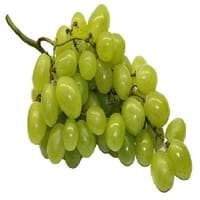Health Benefits
Cancer prevention, Kidney stone treatment, Prevents constipation, Treatment of alzheimer's disease
Asthma treatment, Bronchitis treatment, Cancer prevention, Heart care, Increases metabolic rate
General Benefits
Digestive aid, Improves eye vision, Maintains healthy cholesterol level, Treatment of migraine
Anti-inflammatory properties, Controls blood pressure, Digestive aid, Eye care, Healing of wounds, Maintains healthy cholesterol level, Strengthens bones, Treatment of sinusitis, Treatment of common cold
Skin Benefits
Anti-aging benefits, Heals sunburn, Skin rejuvenation, Treatment of dark spots
Anti-aging benefits, Brightens and lightens complexion, Skin cleansing, Treatment of acne, Treatment of dark spots
Hair Benefits
Prevents hair loss, Regulates hair growth, Treatment of dandruff
Prevents hair loss
Allergy Symptoms
Anaphylaxis, Asthma, Breathing difficulty, Coughing, Drop in blood pressure, Hives, Skin rash, Stuffy nose, Swelling of mouth, tongue or lips, Wheezing
Abdominal pains, Itching in tongue and other parts of mouth, Sneezing, Swelling, Tingling sensation in wrist and face, Vomiting, Wheezing
Side Effects
Allergic reaction, Skin rash, Might slow down the process of blood clotting
Causes swollen mouth, Allergic reaction, Diarrhoea, Nausea, Skin rash, Vomiting
Best Time to Eat
As a snack in the late afternoon, Don't consume at night and before bed, Eat the fresh ones, avoid mixing with any other foods, don't eat after meal., Morning time (before lunch)
Best if taken as a breakfast (or empty stomach), As a snack in the late afternoon, Eat the fresh ones, avoid mixing with any other foods, don't eat after meal., Morning time (before lunch)
Vitamin B5 (Pantothenic Acid)
Vitamin C (Ascorbic Acid)
Vitamin K (Phyllochinone)
Calories in Fresh Fruit with Peel
Not Available
Calories in Fresh Fruit without Peel
Not Available
Type
Berry
Berry, Tropical
Season
Autumn, Summer
Autumn
Varieties
Cabernet Sauvignon, Merlot, Pinot Noir, Syrah/Shiraz and Zinfandel
Smooth Cayenne, Abacaxi, Red Spanish and Queen
Inside Color
Light Green
Yellow
Taste
Sweet-Sour
Strong, Sweet, Tart
Origin
Western Asia, Central Europe
Central America, South America
Grows on
Vines
Not Available
Soil Type
Clay loam, Sandy loam
Clay, Sandy loam, Well-drained
Climatic Conditions
Warm
Hot, Sunny
Facts about
- If left alone, a grapevine can spread 50 feet and even more.
- There are more than 8,000 varieties of grape worldwide.
- They are available in 7 different colors: red, green, white, black, purple, blue and golden.
- A single pineapple takes 3 years to reach maturation.
- Pineapple is not an apple, but is actually a berry.
- The name is with reference to its resemblance to pine cones.
- Pineapple is sweeter if scales are more.
Top Producer
Spain
Costa Rica
Other Countries
Argentina, Armenia, Australia, Chile, France, Iran, Italy, Portugal, Romania, Turkey, United States of America
Brazil, India, Philippines, Thailand
Top Importer
United States of America
United States of America
Top Exporter
Chile
Costa Rica
Botanical Name
Vitis vinifera
Ananas comosus
Synonym
Not Available
Ananas sativus
Subkingdom
Tracheobionta
Tracheobionta
Division
Magnoliophyta
Magnoliophyta
Class
Magnoliopsida
Liliopsida
Subclass
Rosidae
Commelinidae
Family
Vitaceae
Bromeliaceae
Species
Vitis vinifera
A. comosus
Generic Group
Grape
Pineapple
Compare Grape and Pineapple
It is important compare Grape and Pineapple as both the fruits have a different nutritional value. Their comparison can be done on the basis of their vitamin and mineral content, calories, benefits as well as characteristics, making it easier for us to choose the best fruit for our diet. Their general health benefits are as follows:
Grape Benefits: digestive aid, improves eye vision, maintains healthy cholesterol level and treatment of migraine.
Pineapple Benefits: anti-inflammatory properties, controls blood pressure, digestive aid, eye care, healing of wounds, maintains healthy cholesterol level, strengthens bones, treatment of sinusitis and treatment of common cold.
Fruits are also used as a remedy for various hair problems. The hair benefits of Grape are: prevents hair loss, regulates hair growth and treatment of dandruff and hair benefits of Pineapple are: prevents hair loss. Some fruits are known to cause allergic reactions. The allergy symptoms of first fruit are: anaphylaxis, asthma, breathing difficulty, coughing, drop in blood pressure, hives, skin rash, stuffy nose, swelling of mouth tongue or lips and wheezing and the symptoms of second fruit are: abdominal pains, itching in tongue and other parts of mouth, sneezing, swelling, tingling sensation in wrist and face, vomiting and wheezing. Get sorted Grape vs Pineapple comparison with the help of fruit comparison tool by fruitvs.com.









